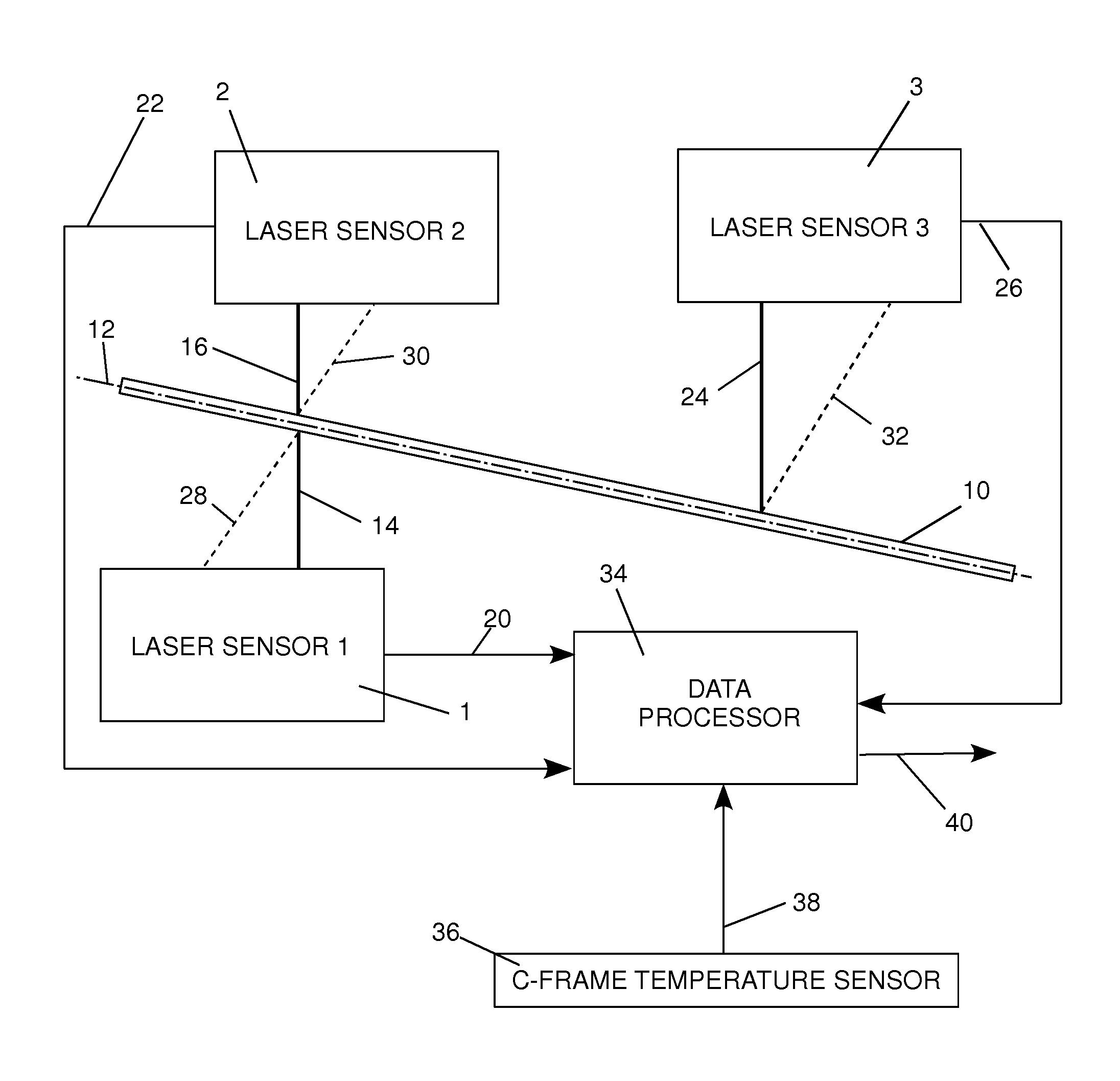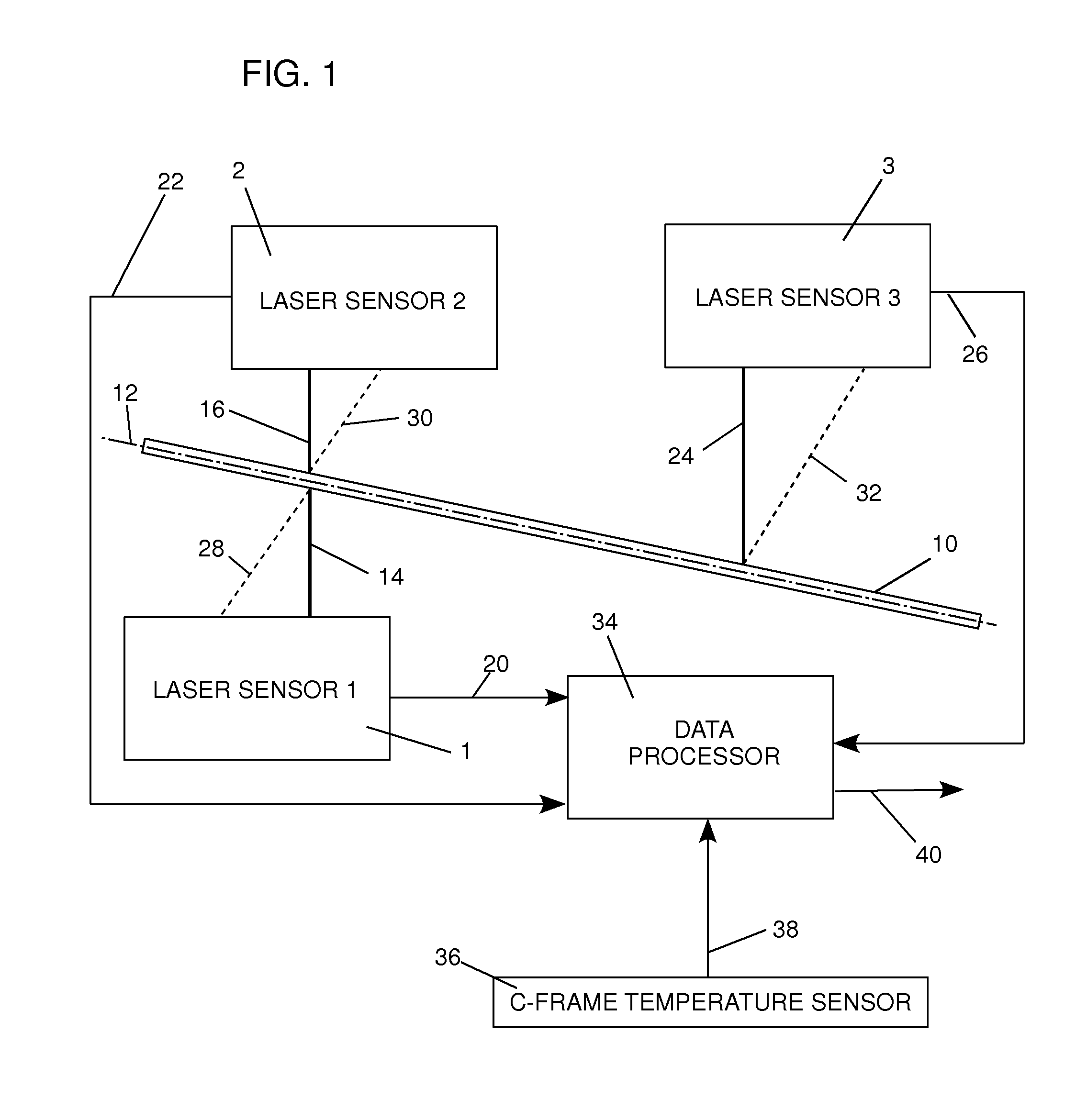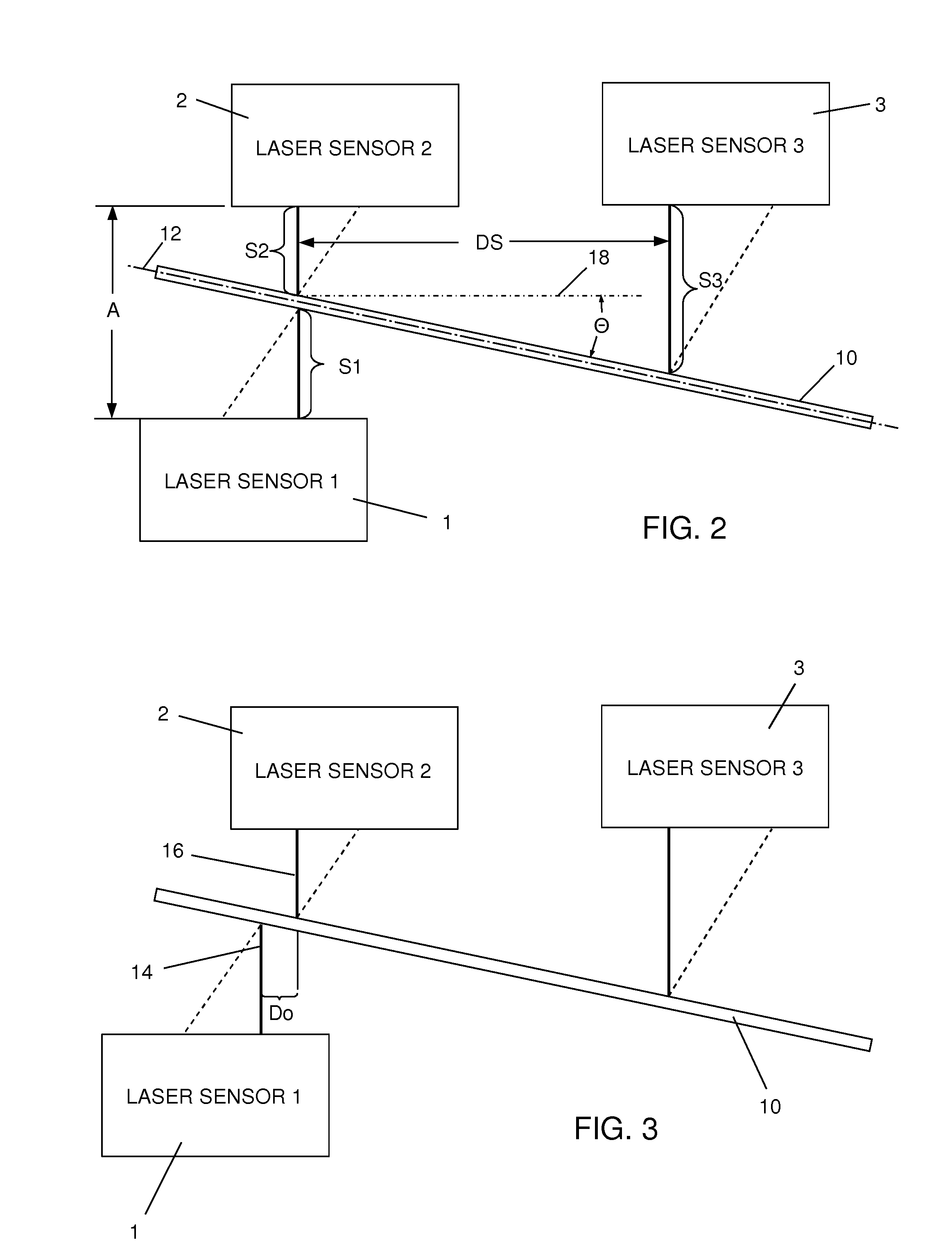Laser thickness gauge and method including passline angle correction
a technology of thickness gauge and passline angle correction, which is applied in the direction of instruments, papermaking, textiles and paper, etc., can solve the problems of complex array of light beams, error in measured thickness, and needing an equally complex algorithm for extracting passline angle data
- Summary
- Abstract
- Description
- Claims
- Application Information
AI Technical Summary
Benefits of technology
Problems solved by technology
Method used
Image
Examples
Embodiment Construction
Hardware Arrangement
[0018]FIG. 1 illustrates a laser thickness gauge embodying the invention for detecting the thickness of a target web 10 extending along a passline plane 12. In order to minimize the clutter of reference numerals, variables and dimensions in any one figure, FIG. 2 replicates several of the component structures shown in FIG. 1 and additionally shows the principal variables and constants that are processed in accordance with the invention and are referred to in the following description.
[0019]Referring to FIGS. 1 and 2, a pair of laser displacement sensors 1 and 2, each capable of transmitting respective laser beams 14 and 16, are spaced apart by an air gap distance A. For example, a typical air gap distance A would be in the range of 40 mm to 310 mm and is dependent upon the range of thickness that will be measured. The first laser sensor 1 is spaced from a first side of the passline plane 12. The second laser sensor 2 is spaced from the second, opposite side of th...
PUM
 Login to View More
Login to View More Abstract
Description
Claims
Application Information
 Login to View More
Login to View More - R&D
- Intellectual Property
- Life Sciences
- Materials
- Tech Scout
- Unparalleled Data Quality
- Higher Quality Content
- 60% Fewer Hallucinations
Browse by: Latest US Patents, China's latest patents, Technical Efficacy Thesaurus, Application Domain, Technology Topic, Popular Technical Reports.
© 2025 PatSnap. All rights reserved.Legal|Privacy policy|Modern Slavery Act Transparency Statement|Sitemap|About US| Contact US: help@patsnap.com



